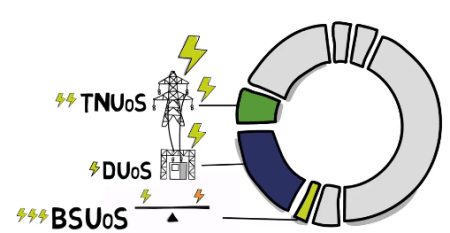
The silver lining in last year’s Triad shift? You’re DSR ready
For many businesses, the tried & tested Triad management strategy to reduce TNUoS costs is to “reduce demand during the half hours when a Triad is highly likely”. Businesses execute this strategy based on the warnings or alerts from their energy suppliers. But this strategy is fast going out of date. To minimise TNUoS costs, many businesses are finding that a strategy of consistent demand reduction is a better option this winter.
Why? Well, Triads are becoming harder to predict as supply and demand patterns change from historic norms. You may avoid one but contribute to another as other businesses also rush to shift their supply elsewhere.
Triad and Tested? How 2015 bucked the trend
Take the case of Triad 3 (the third highest period of demand) last winter which occurred during 17:00-17:30 on Wednesday 25 November. This only just pipped peak demand on Monday 23 November for which we issued a high probability alert. The difference was small – less than 1 mW.
On the Wednesday we issued an amber alert indicating a medium probability (7-20% likelihood) for a Triad. For the two days prior we issued red alerts indicating a high probability of a Triad (more than 20% likelihood).
What we learned
What was different? It’s likely that so many businesses reduced consumption in response to the high probability alerts issued for the Monday and Tuesday that a marginally higher demand the Wednesday became the Triad.
Since 2001, twice as many Triads have occurred on Mondays than Wednesdays. So on reflection it’s not surprising that demand dropped more in response to the red alert on Monday than the amber alert on Wednesday. (Want more Triad data? Download our Triad facts from our Triad Alert service.)
But if your Triad strategy was to be responsive to red alerts calls and leave your demand as normal on other days, you would be exposed.
That’s why this Triad season a better strategy is to be consistent. Be consistent in reducing demand from 17:00 to 18:00 from late November through early February when Triads almost always occur. That will greatly reduce your chances of being caught out again.
Note we said reduce, not eliminate. Last year we saw two outlier Triads:
the first one ever outside 17:00 - 18:00 and the latest ever Triad on 15 February.
The silver lining is…
Businesses are getting better at flexing their electricity demand. In which case, they ready to take part in the wider range of Demand Side Response (DSR) schemes now available. The good news is these schemes can offer extraordinary returns alongside minimising your TNUoS costs.
DSR: Get involved
The latest research from National Grid (get it here from The Energyst) shows businesses are well aware there are many DSR schemes available but hold off getting involved for two reasons:
From our experience helping businesses take part in DSR schemes, there are technology and management solutions to both concerns.
Get in touch. You can email DemandSideResponse@edfenergy.com or call us on 07875 117 807.
For more information visit our dedicated Demand Side Response page


